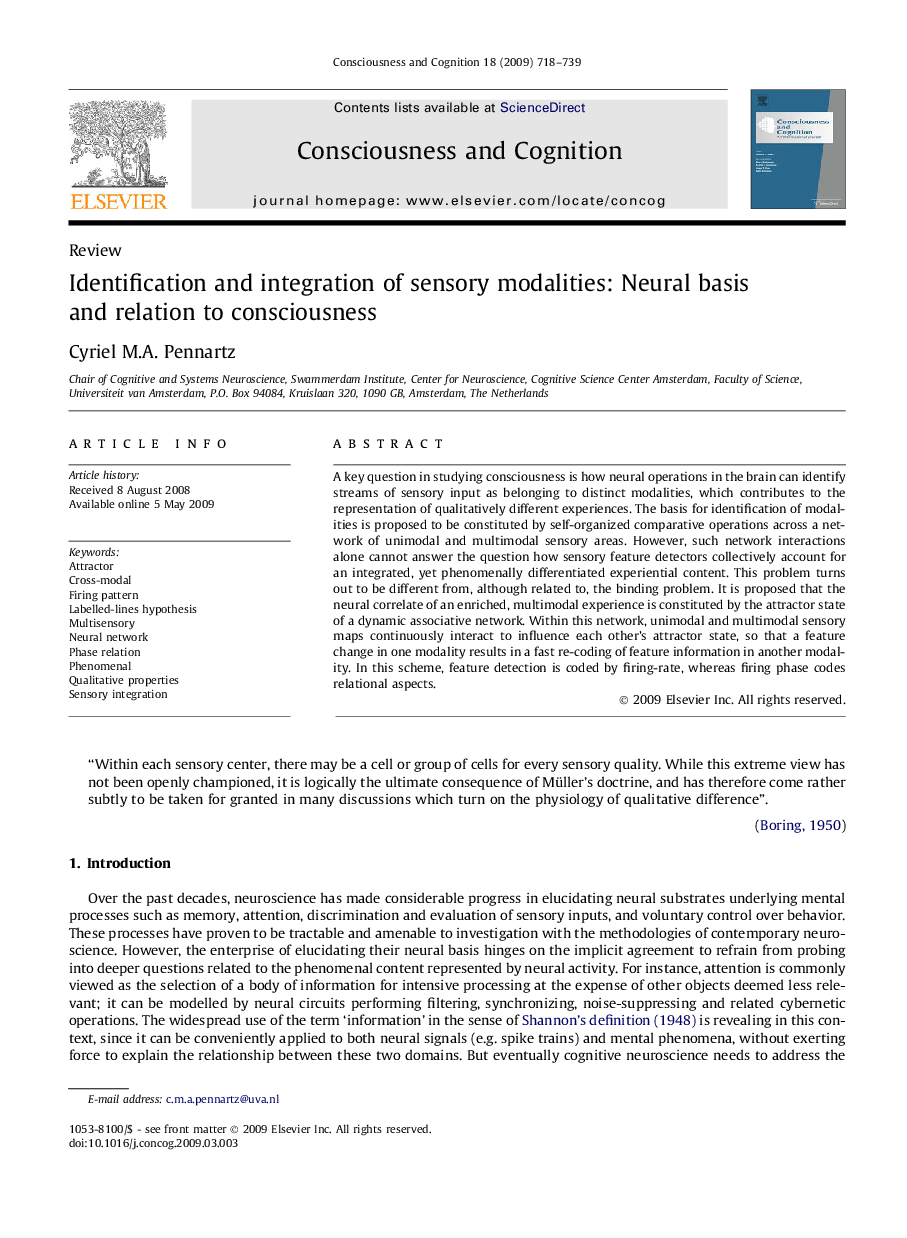| Article ID | Journal | Published Year | Pages | File Type |
|---|---|---|---|---|
| 927902 | Consciousness and Cognition | 2009 | 22 Pages |
A key question in studying consciousness is how neural operations in the brain can identify streams of sensory input as belonging to distinct modalities, which contributes to the representation of qualitatively different experiences. The basis for identification of modalities is proposed to be constituted by self-organized comparative operations across a network of unimodal and multimodal sensory areas. However, such network interactions alone cannot answer the question how sensory feature detectors collectively account for an integrated, yet phenomenally differentiated experiential content. This problem turns out to be different from, although related to, the binding problem. It is proposed that the neural correlate of an enriched, multimodal experience is constituted by the attractor state of a dynamic associative network. Within this network, unimodal and multimodal sensory maps continuously interact to influence each other’s attractor state, so that a feature change in one modality results in a fast re-coding of feature information in another modality. In this scheme, feature detection is coded by firing-rate, whereas firing phase codes relational aspects.
